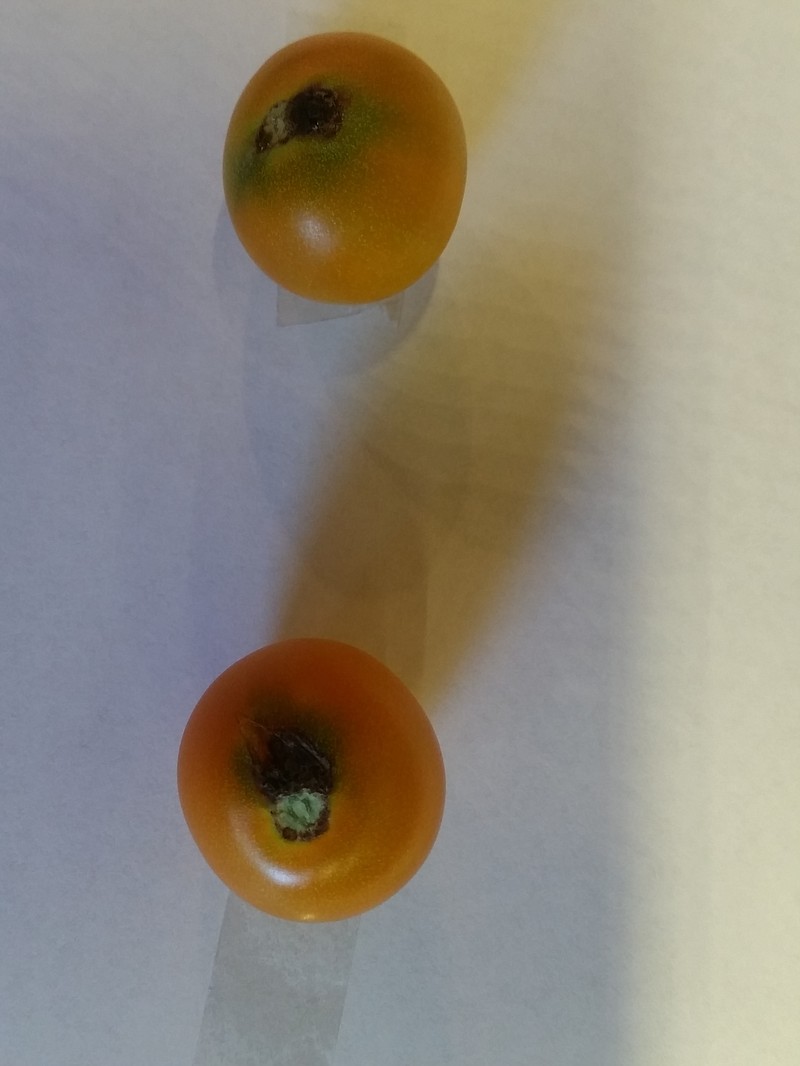Q: There is a spot occurring on the stem end of cherry tomatoes in my and my neighbor's garden. The foliage looks good, as we've had several weeks of dry weather, but there was some blight on leaves earlier this summer. What is causing this? I have Sun Sugar and my neighbor has Sun Gold.
A: A rot spot developing on the calyx or stem end of tomato fruit is a classic symptom of early blight. This is a fungal disease gardeners are familiar with on the foliage, often starting at the base of the plant, turning leaves brown and kind of moving up the plant. Dry weather will often stop or slow its development, but the inoculum will be in your tomato patch. Late summer weather leads to heavier dews and can aggravate a couple of fruit rots, this one and another associated with Anthracnose, which commonly referred to as ripe rot. The latter can occur anywhere on the fruit. One can reduce these diseases by applying a broad-spectrum fungicide, but this late in the season, it's questionable if it will do much good. Picking the fruit as early and frequently as possible is a good cultural practice to reduce the incidence. Hold the fruit cool and dry and use as promptly as you can.
Q: I am interested in growing these berries called haskap. What do you know about them?
A: I didn't know what you were talking about until I looked up that name but then found out I have them planted in my garden. However, there is a bit of name twisting here. Haskaps and honeyberries are of the same species (Lonicera caerulea), with the latter coming from Russian parentage and haskap being of mixed Japanese and Russian genetics. There is another trademarked type of full Japanese parentage named Yezberry.
All of these are extremely cold tolerant; there is some concern if they'll perform well in our heat and humidity. They are considered somewhat shade tolerant, so locating them where they'll get afternoon shade makes some sense. The honeyberry cultivars are more available from catalogs marketing to home gardeners. Two cultivars are need to cross-pollinate. Three years ago, I planted two. They have been carefree to grow and are cute, compact bushes. They develop slowly, and I haven't gotten any fruit of significance. Their flavor is described similar to a blueberry but kind of flat. It matures earlier than blueberries, typically when mid- to late-season strawberries would mature, in early June.
Q: I have a Catalpa tree and it is shedding bark with patches forming underneath. Otherwise the tree looks fine. Is anything wrong with it?
A: It is likely growing very well, as we've had very nice weather this summer for tree growth. As trees grow, their trunks need to expand. For some trees, rapid growth will cause old bark to release and fall off. If the patches underneath look somewhat similar to the old bark or like the bark on the branches, then it is OK. What would be concerning is if the bark falling off revealed wood, but if that was the case, you'd probably be seeing other symptoms of concern.
Q: Is this a good apple year? Do you have any suggestions on good apples to buy?
A: This should be a good apple year. The late frosts that afflicted some early flowering fruit trees largely spared apples, as they flower a bit later. Our cooler than normal August will have benefitted apple development. Cool nights enhance the development of flavor, and August was cooler than normal, so that is beneficial. Additional cool weather as we move into the fall will benefit the flavor of apples that ripen later (e.g. in October).
I suggest you visit your local farmers market and talk with someone selling apples. They'll enjoy giving you suggestions about the different types they sell and which best match your desired end use, such as for pies, canning or fresh eating.

